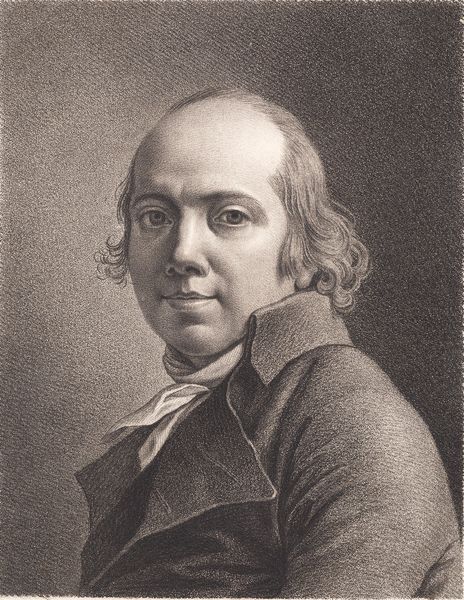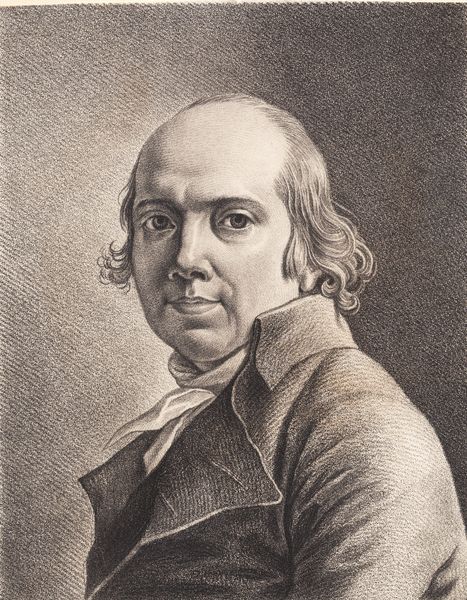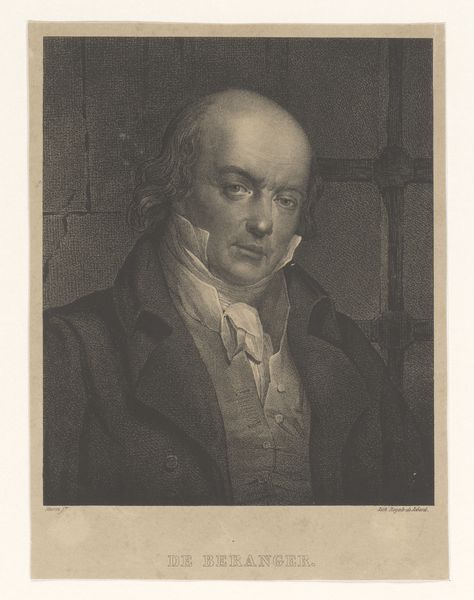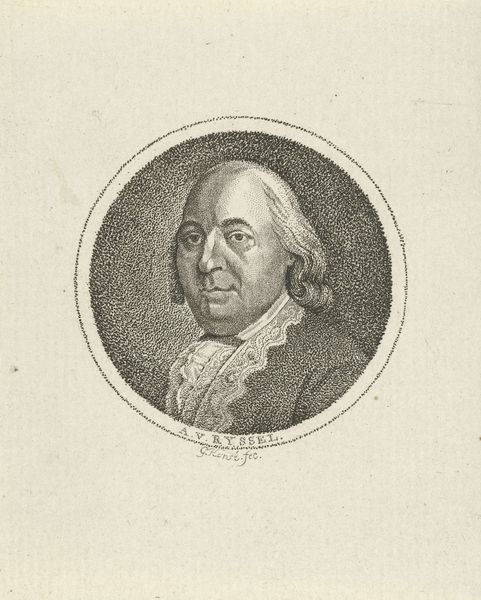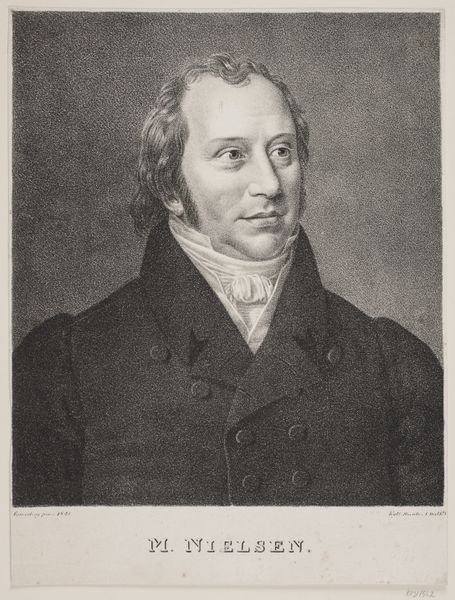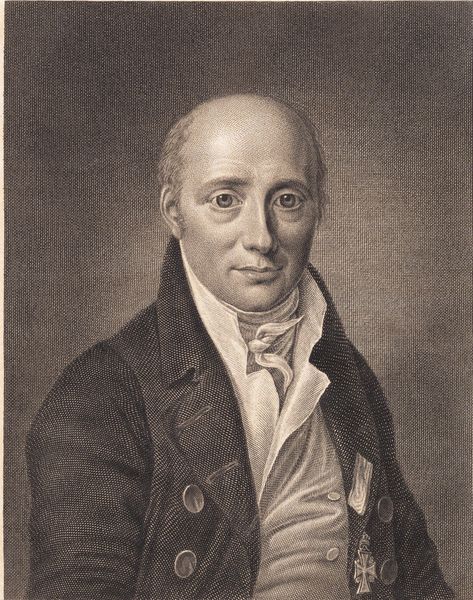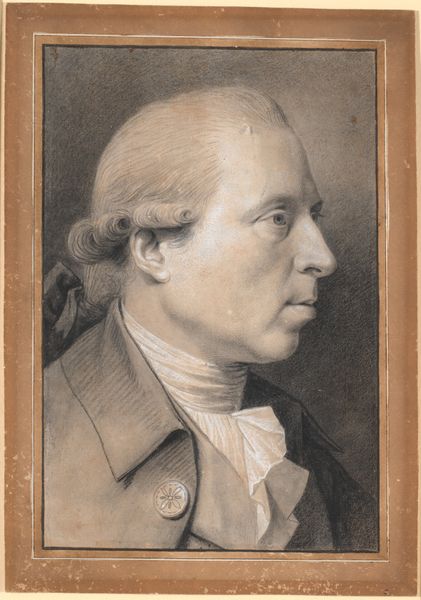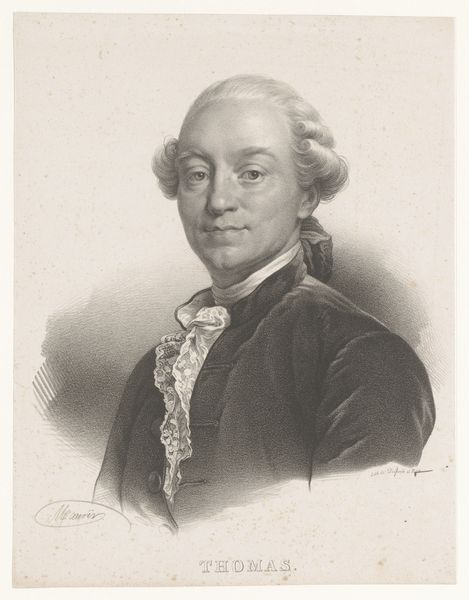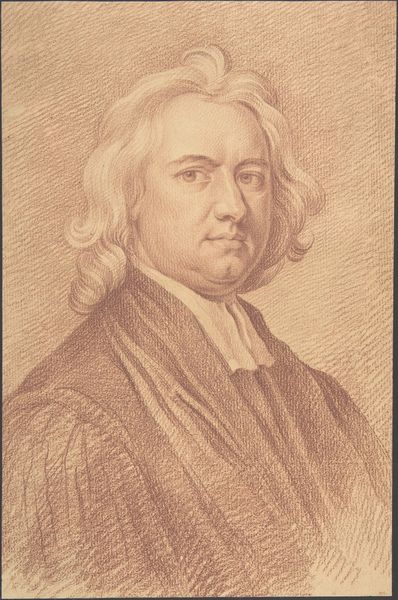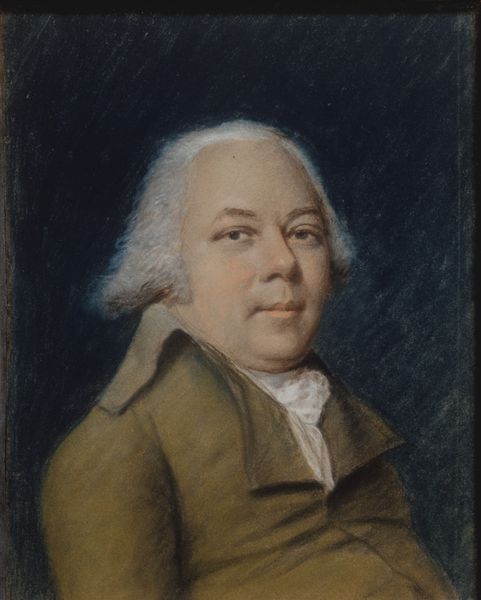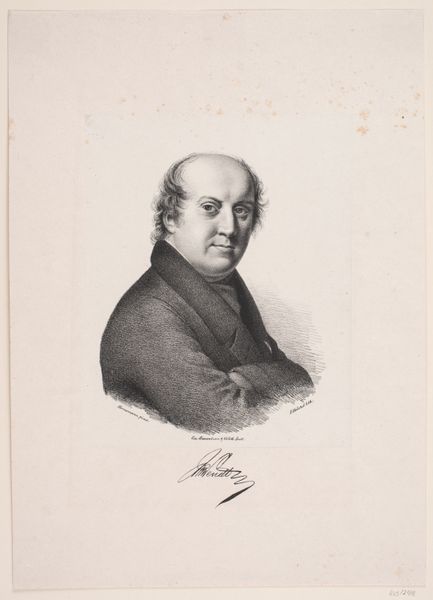
drawing, print, pencil, graphite
#
portrait
#
drawing
#
neoclacissism
#
portrait
# print
#
romanticism
#
pencil
#
graphite
#
portrait drawing
#
history-painting
Dimensions: 342 mm (height) x 249 mm (width) (bladmaal), 290 mm (height) x 234 mm (width) (plademaal), 247 mm (height) x 193 mm (width) (billedmaal)
Editor: So, here we have Jens Juel's self-portrait, rendered in graphite, dating back to 1801. There's an immediate sense of quiet contemplation about it. How do you interpret this work, especially considering the era it was created in? Curator: This portrait provides a fascinating lens through which we can examine late 18th and early 19th century notions of selfhood and artistic identity. Consider the context: Juel was working during a period of significant social and political upheaval. The rise of Neoclassicism, intertwined with Romanticism, signaled a shift toward valuing individual expression against the backdrop of revolution and changing societal structures. What do you notice about his gaze? Editor: He looks directly at the viewer, but there's no overt emotion, no real flourish. It feels... controlled. Curator: Precisely! That control is key. This wasn't just about likeness; it was about constructing an image that reflected specific ideals. Artists like Juel navigated a complex social landscape, relying on patronage, while also striving for artistic autonomy. His expression seems almost stoic, but could this be a conscious attempt to align himself with emerging bourgeois ideals? Do you see how the plainness in attire underscores a claim to authenticity? Editor: So, it’s less about capturing his actual appearance and more about projecting an image of artistic integrity? Curator: Exactly! Think of the self-portrait as a carefully curated performance of identity. He's presenting himself as a serious, thoughtful individual, worthy of respect and patronage. It's not just a face; it’s a statement about the role of the artist in society. Editor: That's a fascinating way to look at it. I was so focused on the technical aspects, I hadn’t considered the social commentary embedded within. Curator: Art always reflects its historical and social conditions. Seeing it within these contexts opens up richer interpretations and understandings of not just the artist, but the world they inhabited. Editor: Absolutely, I'll remember that. Thanks for shedding some light on this!
Comments
No comments
Be the first to comment and join the conversation on the ultimate creative platform.
